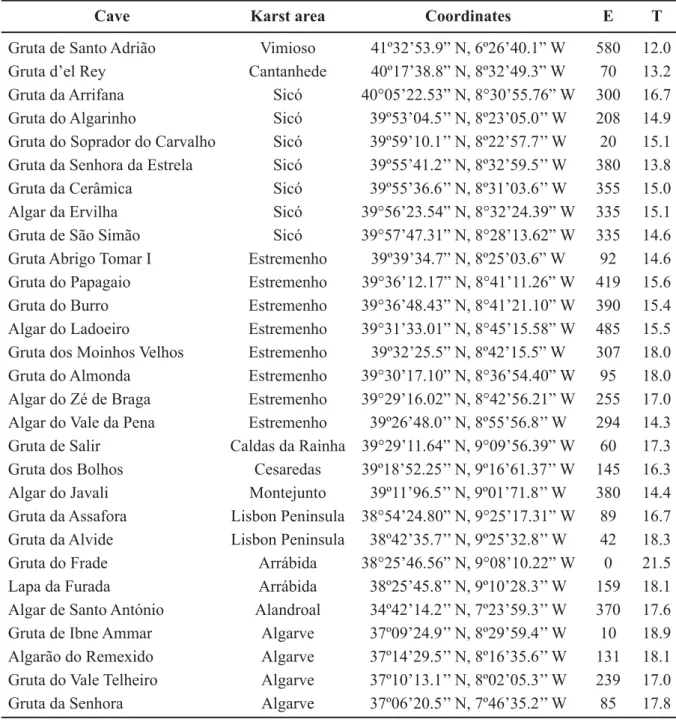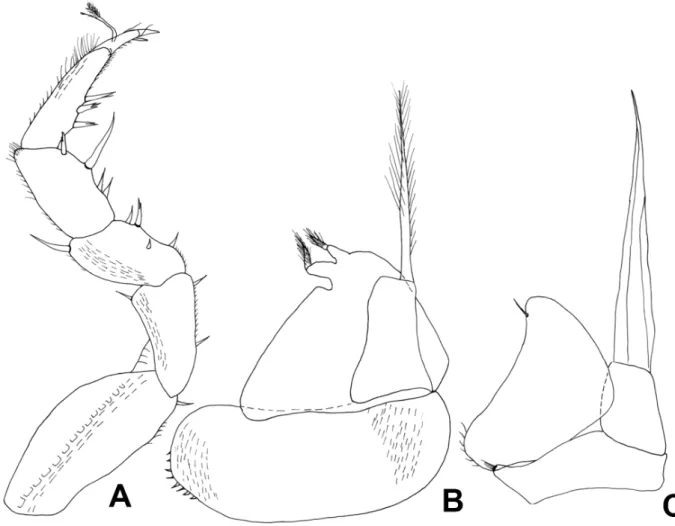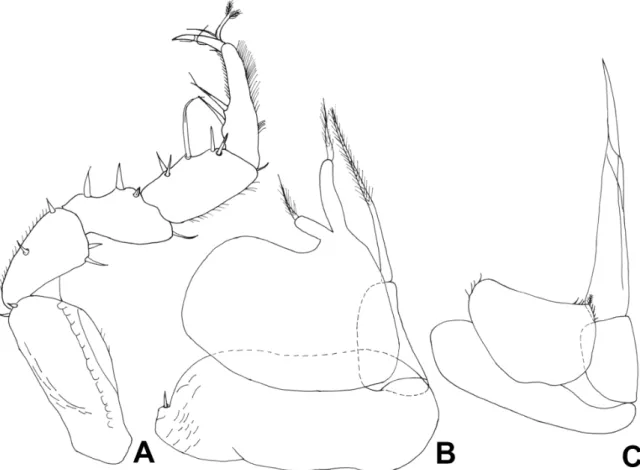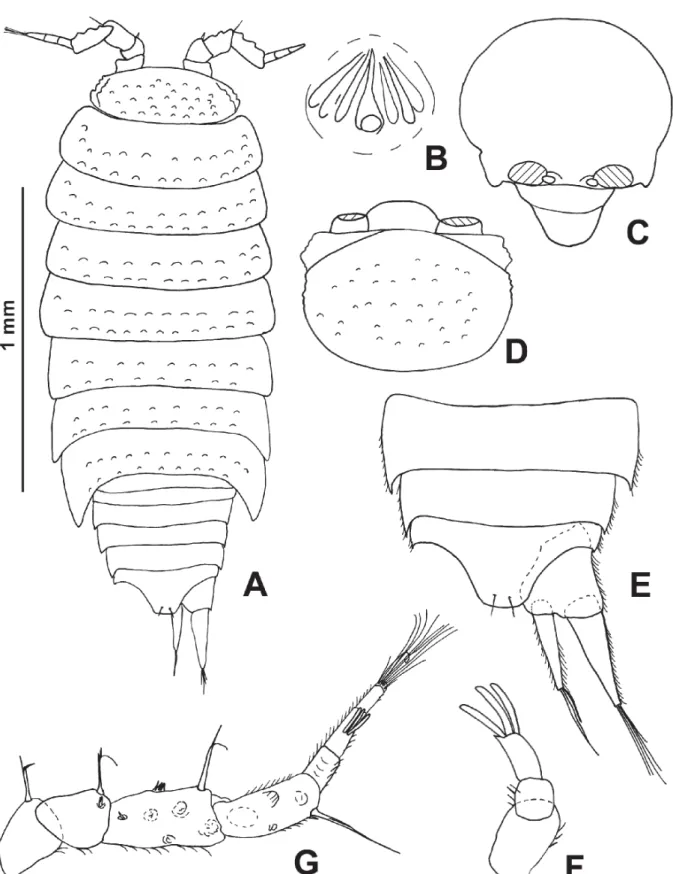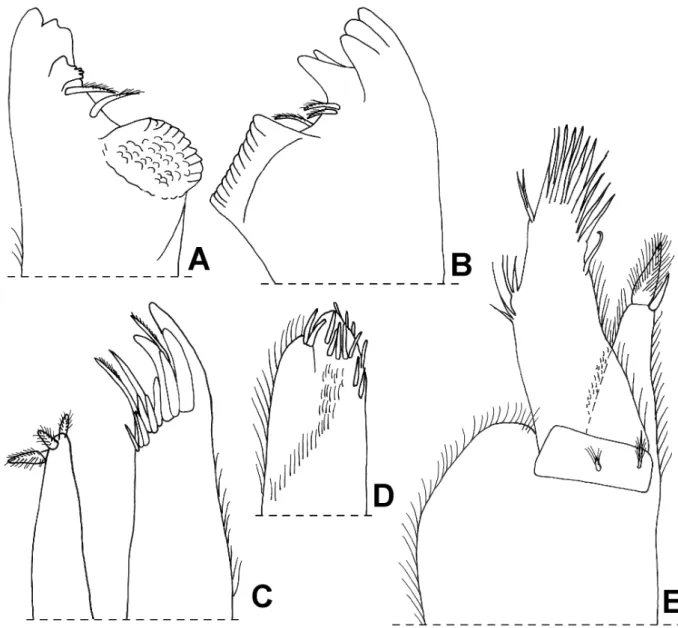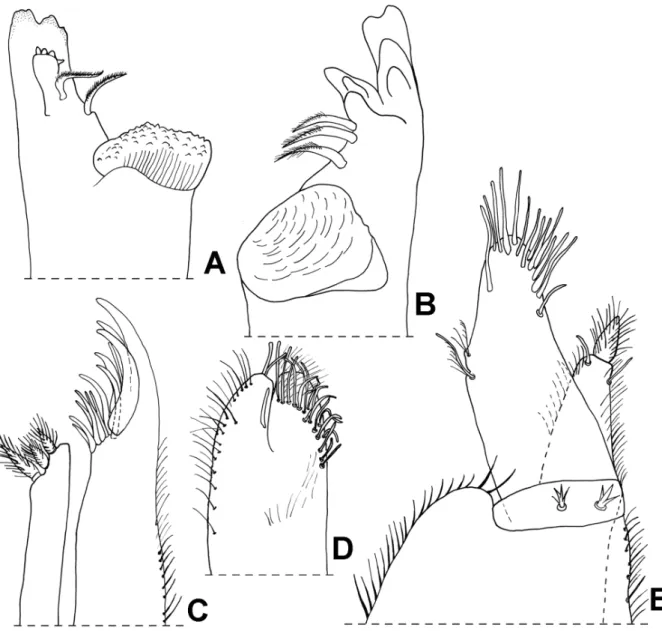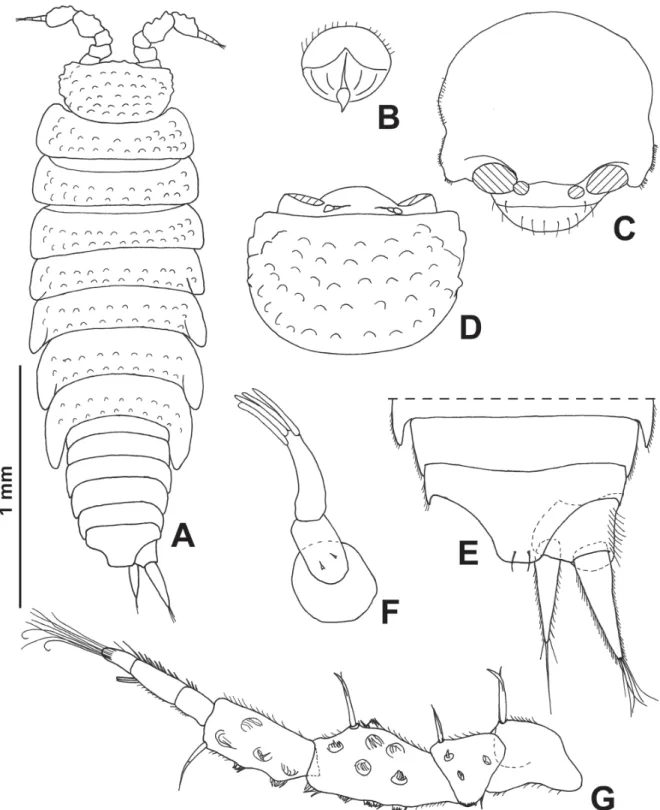http://dx.doi.org/10.5852/ejt.2015.161 www.europeanjournaloftaxonomy.eu 2015 · Reboleira A.S.P.S. et al.
This work is licensed under a Creative Commons Attribution 3.0 License.
M o n o g r a p h
urn:lsid:zoobank.org:pub:2297E4A3-D279-4D0A-923C-D5E0D5DCB3C0
The cavernicolous Oniscidea (Crustacea: Isopoda) of Portugal
Ana Sofi a P.S. REBOLEIRA
1,*, Fernando GONÇALVES
2, Pedro OROMÍ
3& Stefano TAITI
41,2
Departamento de Biologia & CESAM, Universidade de Aveiro, Campus Universitário de Santiago, 3810-193 Aveiro, Portugal.
1,3
Departamento de Biología Animal, Facultad de Biología, Universidad de La Laguna, 38206 La Laguna, Tenerife, Islas Canarias, Spain.
1
Zoological Museum, Natural History Museum of Denmark, University of Copenhagen, Universitetsparken 15, 2100 Copenhagen Ø, Denmark.
4
Istituto per lo Studio degli Ecosistemi, Consiglio Nazionale delle Ricerche, Via Madonna del Piano 10, 50019 Sesto Fiorentino (Firenze), Italy.
*
Corresponding author: sreboleira@ua.pt
2
Email: fjmg@ua.pt
3
Email: poromi@ull.es
4
Email: stefano.taiti@ise.cnr.it
1
urn:lsid:zoobank.org:author:338DE845-4839-4EF5-B684-587C021F076C
2
urn:lsid:zoobank.org:author:4B8A2E04-3543-465F-9949-B7E1745DA931
3
urn:lsid:zoobank.org:author:00F2ACC4-308B-4BEE-BBA4-DE6AC8905449
4
